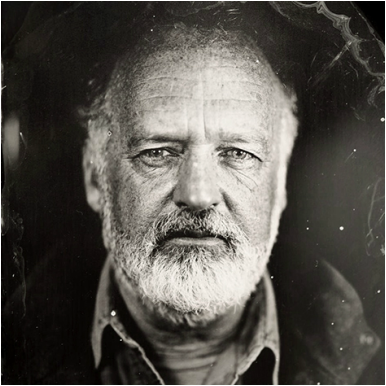|
The Port is in flux. Dormant industrial buildings are being reclaimed and repurposed. With analogue cameras and rolls of film, three local photographers have unbolted doors to capture this moment of transition.
The ghosts of the working port are everywhere. In the wool stores, jarrah floors reek of lanolin. In the flour mill, dusty machines evoke the thunder and rumble of steel and stone cracking wheat. At the quarantine station, bedding laced with moth holes is tossed back from an iron bedstead as if the internee has just departed. Of the cluster of boat yards that clung to Cruickshank’s Corner, nothing is left but steel slipways; the rest was demolished in 2009. The photographers find beauty in abandoned spaces, hidden elements revealed by a shaft of light through a broken window, the solidity of stone quoins that once bore the weight of tons of milling machinery. About the Project
|
|
The images for this project have been taken over the last ten years by three local and passionate photographers; Danica Gacesa McLean, Tony Kearney and Sandra Elms. We all live within 200 metres of the SA Maritime Museum in Port Adelaide. The images are of just some of the vacant interiors in and around the Port; the Woolstores, the Quarantine Station, what's left of the Boat Yards, the Harbors Board building and Hart's Mill.
The earliest of these images were taken when the Port's boatyards, that once flourished in Jenkins Street on the Birkenhead bank of the Inner Harbor, were in full operation and soon after, when they were under threat of removal. We started out just recording the daily goings-on in the boatyards, the making and repairing of boats and the characters that occupied these gloriously textural places. We just thought it was important and a real privilege to record what was there. Then when the demolition orders were issued we wanted to use photography to make the community aware of what potentially could be lost and record what we could in the time they had left. We wanted to record the culture of boatbuilding in the Port in case the planned evictions and immediate demolitions did eventuate. Unfortunately for all of us they did end up being removed and as a result five generations of boatbuilding history and culture were lost to us all. Having lost the boatyards it seemed only natural that we should continue to document the place where we live, the Port, particularly the empty interiors, before they too were potentially lost or changed forever. So we took advantage of every opportunity we could to gain legitimate access to buildings that other people might never get access to in the hope that one day we might be able to share these places with others. After putting together a few modest local exhibitions which showed some of the images of the interiors, earlier this year we were approached by Lindl Lawton, Senior Curator from the South Australian Maritime Museum, to put together a more comprehensive exhibition. It would show some of the interiors that we had already partially documented over the years and also others that we had previously not had access to. To this end we have to thank Renewal SA for providing us with unfettered access to Hart's Mill, the Harbors Board building and to the buildings that surround Fletcher's Slip, and the South Australian Maritime Museum for providing the keys and personnel to access the Quarantine Station and provide all the film and chemicals we needed to complete the project. We would also like to thank the many building owners and individuals who came along for the ride and let us into their buildings to explore and produce the images you see here. It's been a blast. And most of all, we'd particularly like to thank Atkins Photo Lab for their sensitive and professional treatment of our images, for without their input in this project this exhibition may not have taken place. Tony Kearney, December 2016 |
|
The Photographers
|
|
Danica Gacesa McLean
A Portonian for 25 years, Danica has a passion for analogue photography, obsessively collecting antique photographs, lenses, and cameras. In 2007 she recorded the construction of the Port River Expressway Bridge; this led her to focus on documentary photography. Danica has since captured other sites on the brink of demolition or upgrade including Port Stanvac Oil Refinery and Glenside Hospital |
|
Tony Kearney
Tony Kearney lives in Port Adelaide. He’s an analogue photographer (puts large format old film through even older cameras) who exhibits regularly and who has a passion for the Port’s heritage and culture. His work has made the final jury round of the International Fine Art Photography Awards in Paris, been a finalist in the $25,000 Kennedy Contemporary Art Award, recently won the $5000 RED photographic challenge and has had work acquired by the National Portrait Gallery. Photography is a passion, although Tony lacks any formal qualifications he is regularly employed as a part time lecturer teaching B&W photography at the University of South Australia. |
|
Sandra Elms
Sandra Elms is mostly a graphic designer and sometimes a photographer. Recently she has spent more time on photography, and since 2009 has been exhibiting her work. Port Adelaide became home around 16 years ago and its special mix of industrial waterfront, wharf sheds, ships, cranes, mill buildings and woolstores continues to inspire. |



